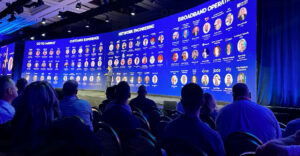
In their eagerness to bring the benefits of wireless internetworking to their cities, mayors in Chicago, Houston, San Francisco and other U.S. cities have bought into untested, inflated claims. Now, they are revising their plans to roll out municipal WiFi networks.
Last month, Chicago began backing out of plans to launch a citywide WiFi service after refusing contract bidders EarthLink and AT&T’s request that the city commit to being an anchor tenant and paying to use the network to support city services. This has become a new wrinkle commonly included in project bidders’ business models. The news adds to a stream of upsets in recent months that may amount to a death knell for citywide WiFi.
“The problems of WiFi aren’t just the sloppy, hysterically hopeful business models. They include security issues — no agency of the federal government will use WiFi due to its security problems — technical issues, and most damning of all — the fact that almost no one uses it outside of the home or small business office,” David P. McClure, president and CEO of the U.S. Internet Industry Association, told TechNewsWorld.
Muni WiFi Casualty List
“Nowhere has WiFi attracted a significant audience of paying users — nowhere. There are no success stories in muni WiFi, just failures that have not yet occurred. Not here, not in Europe, not in Asia — nowhere,” McClure asserted.
On the West Coast, EarthLink is withdrawing from San Francisco’s citywide WiFi project, though the city remains committed to building the network. “We are going to get it done — quickly,” said Gavin Ballard, spokesperson for Mayor Gavin Newsom.
Smaller citywide WiFi projects are also running into serious problems. AT&T recently canceled plans to build one in Springfield, Ill. Rhode Island has invested more in WiFi than any other New England state, but its General Assembly recently voted against issuing a US$28.5 million loan to partly finance a statewide WiMax broadband network.
The recent string of bad news may prove fatal for EarthLink. In addition to backing out of the Chicago and San Francisco projects, the company has to pay a $5 million penalty for delays on Houston’s muni WiFi project and announced it will lay off 900 employees in offices across the U.S.
“Big-city WiFi is dead at the moment, because the cost and requirements were a big mismatch with where the money can come from for the projects. EarthLink offered too much, realized it, and pulled back, but no one is stepping up to take their place because no other firms could build San Francisco, Houston, Chicago or other cities and make money, either,” commented Glenn Fleishman, a journalist and veteran WiFi industry observer.
Notable and Salutary Failures
McClure chose three key deployments as illustrations of the misguided exuberance — and poorly invested public capital — muni WiFi has generated since the late ’90s: Chaska, Minn., Philadelphia and San Francisco.
Chaska’s mayor was a popular speaker at city WiFi conferences and an advisor to other cities after the Minnesota city rolled out a network.
Chaska’s system was successful — at least initially — because the town is small, has a large college student population and the service, at first, was free, according to McClure. After phone and cable companies began offering broadband connections in Chaska early this decade, “the town found itself in a battle to keep competition out — even better broadband — in order to protect its investment in its own network,” McClure recounted.
The city’s efforts to make the system pay for itself have failed. “They still have WiFi in Chaska, but no one would consider it highly successful,” McClure said.
Philadelphia decided to scale up and introduce a citywide WiFi network following the success of a small pilot project in a city park.
“Outrageous claims — including the city’s plan to ‘put the cable and telephone companies out of business in Philadelphia — brought national attention and closer scrutiny by the city council. Ultimately, the project was scaled back and rewritten. It will likely never get off the ground.”
McClure sees the same happening in San Francisco. “Touted as the great miracle to be, this system simply would have cost too much and attracted too few users.”
Fundamentals Lost in the Hype
McClure and other knowledgeable parties who raised doubts about the technological claims implicit in citywide WiFi network business models were branded as “sock puppets” and worse of the large telco and cable Internet service providers (ISPs) when the muni WiFi wave was peaking more than a year ago. It turns out that their skepticism was well-founded.
Pointing out that WiFi was never designed or intended to be used for wide-area wireless networking wasn’t something that vendors and other proponents wanted to hear, or were willing to give fair hearing too.
“WiFi is not and never has been a technology intended for … or suitable for wide-area deployment. It’s a ‘last 30 feet’ technology, not a ‘last mile’ technology. It doesn’t penetrate brick, concrete, trees or even office walls very well. Where it does, it is subject to interference from a wide number of sources because it exists in the ‘junk’ frequency also populated by cordless phones and microwave ovens. It works reasonably well in a coffee shop, but not worth a damn over square miles,” McClure said.
Going Against the Grain
“The residential WiFi market served by a metro-scale provider seems pretty much debunked at this moment in time,” Fleishman concurred.
He contended, however, that “medium-sized and small-city WiFi is still pretty reasonable, because there are a lot of cost savings to be realized from making a deal with a provider to replace more expensive and typically slower broadband lines used for city communications, expand public safety communications at much lower cost (using dedicated frequencies), and incidentally offering mobile access to people with handheld and laptop WiFi.”
There are others who still see promise in muni WiFi — albeit in scaled down forms with different business models and including WiFi along with other wireless network communications technology. Nortel has an integrated line of wireless networking equipment and software solutions and is partnering with local and regional ISPs in courting municipalities interested in wireless network build-outs.
Front Range Internet in June announced that it will make use of Nortel’s wireless mesh network, WLAN 2300 and WiMax solutions as it rolls out complete municipal WiFi networks in about 12 cities north of Denver.
Front Range Internet and the Fort Collins, Colo., city government got together and in July launched a muni WiFi network in the city’s downtown that offers 30 minutes of free daily connectivity within a square mile area. More than 20 wireless access points were installed on utility poles and buildings to create a seamless mesh network.
Barry Eastman, Front Range’s director of special projects, provided some insight into the company’s approach to the market and cited some of the factors that make for viable municipal WiFi network deployments.
“We have been cautious with our business cases on ubiquitous rollouts from the beginning. The municipality has to be a part of the solution as anchor tenant or at least help move the solution forward to its members,” Eastman told TechNewsWorld.
Targeted rollouts are another important aspect in building a viable business and operational model, he added. “Things such as venue-based environments (indoor and outdoor), such as libraries and events centers; downtown environments where nomadic users will want to buy monthly accounts and advertising based revenues work; business and residential environments where they are purchasing a solution to further their ‘desirability’; and municipalities that are buying the solution for their constituents.”





















































